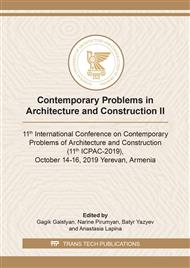p.136
p.141
p.146
p.153
p.158
p.163
p.170
p.180
p.194
Test of Asphalt Working from a Mill from the Frez from the Exploded Asphaltobetone Layers of Road Surfaces
Abstract:
The milling cutter obtained from milling the surface layers from the worn out class A, S and GP roads is a valuable component of the newly produced asphalt mixtures. The proportion of granulate as a material obtained from the aggregate cutter with the content of used asphalt binder for MMA production according to available recommended documents should not exceed 30% of recycled material in the overall composition of the weight formula of the new mixture designed with the participation of fresh native aggregates. MMA properties with a 30% share of the milling cutter for fabrication of the foundation layer and an intermediate layer with parameters do not differ from mixtures made of native aggregates. It is purposeful to develop framework standards for specifying the methods of obtaining and its classification for objective evaluation and a high-value application in MMA technology involving partial or full processing of an asphalt cutter.
Info:
Periodical:
Pages:
158-162
Citation:
Online since:
December 2019
Authors:
Keywords:
Price:
Сopyright:
© 2020 Trans Tech Publications Ltd. All Rights Reserved
Share:
Citation:


